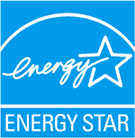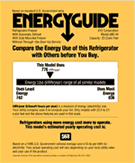Boilers
Get Rebates,
Incentives & Services
Introduction
Heating and cooling typically accounts for 30 to 40% of your annual energy bill. Next to furnaces, boilers are the second most common heating system in the United States, although they are less common in California. (Only about 2% of California homes use boilers.) A boiler uses either natural gas, oil or electricity to heat water or produce steam, which is circulated through a network of pipes into radiators, baseboard convectors, radiant floors or fan-forced coils. Conventional, older boiler systems may only be 60% efficient. By upgrading to a new boiler, you could save considerable amounts of money on heating throughout the life of the new equipment.
Technology Options
Boilers can be hot water or steam, and either type can be gas or oil boilers. The piping systems are different for each type. The hot water system boiler uses a pump to circulate the hot water while the steam boiler uses its own pressure to circulate the steam throughout the system. Both use a burner to heat the water to the temperature that is set on the thermostat. An aquastat monitors the temperature of the water and turns the burner off when the temperature reaches the desired level. Steam boilers must heat the water to a higher temperature, and therefore have lower efficiencies than hot water boilers. Natural-gas-fired boilers are more efficient than oil-fired boilers.
Combination boilers combine water heating and heat generation in one unit and can save considerable money on heating and water heating costs. The heating part of the "combi" boiler works in the same fashion as other boilers. For more information on water heating, visit the Water Heater Product Guide.
| Boilers can achieve greater efficiency with improved features, such as: | ||
|
||
Efficiency Ratings
The efficiency of new boilers is measured by the annual fuel utilization efficiency (AFUE), a measure of overall performance. The federal minimum-efficiency standards for boilers took effect in 1992, requiring that new boiler units have an AFUE of at least 80%. In comparison, many older boilers have AFUE ratings of only 55 to 65%. Some of the highest-rated units are natural gas-fired, with AFUE ratings as high as 99%. ENERGY STAR publishes a list of the most energy-efficient gas and oil boilers of various sizes on its website.
For more information, visit the American Boiler Manufacturers Association and the Plumbing-Heating-Cooling Contractors Association.
Efficiency Benefits
ENERGY STAR qualified boilers have an annual fuel utilization efficiency (AFUE) rating of 85% or greater when properly sized and installed. They use approximately 10% less energy than today's standard boilers. You could save up to 30% on heating bills by replacing a 10-year-old boiler with a new ENERGY STAR qualified boiler. By combining your investment with advanced controls such as programmable thermostats, you can save even more.
Manufacturers
Burnham Corp., and Carrier Corp. are two of the manufacturers of ENERGY STAR qualified boilers.
For a complete list of ENERGY STAR manufacturer partners, visit the ENERGY STAR website.
Purchasing Tips
|
||











